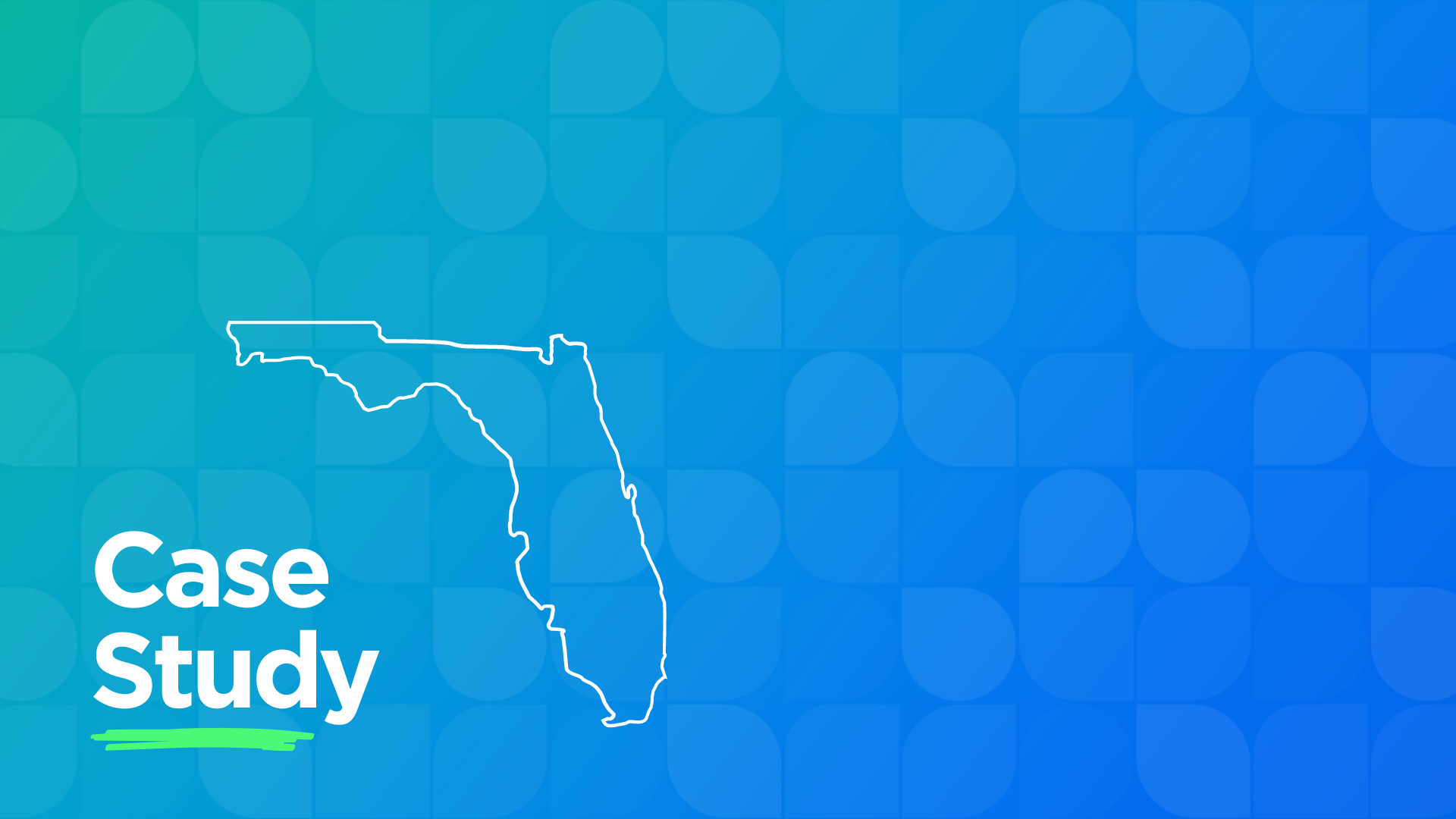Lake County Intermediate School: Using Standards-Based Grading to Drive Deeper Learning
Stephanie Gallegos, principal of Lake County Intermediate School, wanted to get her school ahead of the curve with standards-based grading — but she didn’t want to burden her already-busy teachers with yet more paperwork.
Gallegos was noticing inconsistencies in how her teachers integrated standards-based instruction and grading into their classrooms:
- The school didn’t have a standards-based grading system or way of reporting out progress toward standards rather than traditional academic subjects.
- Students’ learning habits weren’t incorporated into their grades, and they therefore received varied amounts of attention.
Discovering Schoolrunner for Standards-Based Grading
Like many administrators, Gallegos struggled with truly integrating standards-based grading (SBG) into her school’s culture.
That’s where Schoolrunner came in.
Gallegos had heard from her superintendent about Schoolrunner’s robust education management platform. Two of her biggest influencers, a third- and a sixth-grade teacher, had heard about Schoolrunner as well and asked Gallegos if they could try a three-month pilot.
After a few months, when Gallegos asked her influencers to report out about their experience using SBG on Schoolrunner, she was surprised by the level of enthusiasm they had drummed up within her staff.
“I was thinking we’d expand the pilot to a few more teachers, but my pilot teachers’ overwhelming success using Schoolrunner’s standards-based grading capabilities inspired my whole staff to say, ‘Are you kidding? We ALL want to pilot it!’” says Gallegos.
Schoolrunner’s integrated Academic and Cultural Suites allow teachers to seamlessly incorporate standards-based instruction and grading into their daily routines. Each semester, Gallegos and her teachers assign specific state and national standards to each course.
Now, when her teachers enter grades on assessments, they’re prompted to bucket that quiz, essay, or homework assignment under a specific standard. They can even tag specific assessment questions to specific standards.
Once the results are entered, teachers immediately see areas for improvement. Schoolrunner analyzes the results and prioritizes the standards that the most students have yet to master.
Gallegos and her teachers can now consistently track students’ progress toward “softer” standards as well. They have a daily class called CREW, where they focus on community, character, and habits of learning.
In the past, they struggled to incorporate students’ performance in CREW into their general academic record. Now Lake County Intermediate School has assigned standards to their CREW course and tracks students’ progress toward these more character-based standards.
This enables Gallegos and her teachers to view social and emotional aspects of their students and not just the academic side — without adding more work to teachers’ already busy schedules.
“Someone who worked in schools must have designed Schoolrunner, because it’s made for teachers,” says Gallegos.
Although Gallegos and her teachers are still in the beginning phases of truly integrating SBG into their daily routines, some teachers are already exploring Schoolrunner’s extensive analytical tools as a way to use their students’ data to drive instruction.
For example, one teacher imported her ANet scores into Schoolrunner and created a pre-test based on standards that needed more focus, designed specific instructional content around areas of need, conducted a post-test, and analyzed the differences between pre- and post-testing.
Not only does Schoolrunner allow Gallegos and her teachers to integrate SBG into their daily routine but also Lake County can now view their gradebooks by standard and also by assessment type (i.e., homework or quizzes).
Now, from a coaching standpoint, Gallegos can view specific activities that teachers are doing to drive mastery of certain standards, then use that data to:
- Give actionable advice to teachers
- Share best practices amongst staff
- Provide real-time data to enhance the productivity of Lake County’s PLCs
Gallegos is also using Schoolrunner to design standards-based report cards and progress reports.
At that point, with the help of Schoolrunner’s intuitive and integrated education management platform, Lake County Intermediate School will have truly integrated SBG into their school’s infrastructure, including standards that are more content-focused as well as competencies that emphasize habits of learning.
When we can see a student’s whole story, we have the power to reshape it — every day.
Similar to Lake County, ever more schools and districts are adopting standards-based grading systems into their schools. One of the main objectives of SBG is for educators to evaluate students’ content understanding and skill mastery on a deeper level.
As states and federal curriculum guidelines shift from content-based to standards-based formats, teachers and administrators have a real opportunity (and challenge!) to reinvent not only the way their school measures academic success but also the way their school drives success.
In the pre-SBG days, teachers and school systems generally assessed students’ academic success through a narrow content lens.
For example:
- Eddie correctly identified 95% of the historical landmarks in a quiz about the first 13 U.S. colonies, which indicates content mastery in this specific unit of his history class.
- But viewing that same assessment through a standards-based grading lens, a teacher could say that Eddie’s 95% on the 13 colonies quiz indicates that he’s exceeding Standard H&SS9-12:9 (“Students show understanding of how humans interpret history by reading and interpreting historical maps”).
In this example, viewing Eddie’s progress through a standards-based grading lens didn’t necessarily change the assessment or instruction; it was essentially just semantics. But it doesn’t have to just be semantics; the challenge and opportunity that educators face is how to use SBG to actually deepen students’ content and skill mastery.
How do we use standards-based grading to drive instructional methods and enhance student learning?
In this example, to use SBG to foster deeper learning, Eddie’s teacher could design the unit about the 13 colonies with Standard H&SS9-12:9 (“Students show understanding of how humans interpret history by reading and interpreting historical maps”) in mind from the outset.
Then the teacher could conduct his instruction about the 13 colonies through the lens of the standard rather than simply the content.
To truly focus on the standard, the teacher would incorporate instruction around reasons why the 13 colonies were constructed the way they were, how different groups of people throughout history may have viewed the colonies, and what biases might impact the way we view the successes and failures of the colonies. Basic rote memorization of the colonial map would not satisfy the standard here.
And that’s where the deeper learning takes place; by focusing instruction on the standard rather than the content, the teacher probes students to look more analytically into the content, thereby enhancing students’ critical and creative thinking skills rather than just their ability to memorize locations on a map.
The key here is to integrate SBG into your daily routine so that standards are at the core of your unit, lesson, and assessment planning process — and that’s exactly what Gallegos and her teachers at Lake County are partnering with Schoolrunner to do.
Every Day is Data Day with Schoolrunner
At Schoolrunner, we believe that insight has the power to transform, so we make it seamless for teachers, leaders, kids and families to collect and reflect on the most important indicators of student growth and achievement.
Gallegos and her staff know that the more intimately teachers integrate standards-based instruction and grading into their school, the more they unlock its real power, and — most importantly — the result is a more meaningful and holistic educational experience for students.
Learn how Schoolrunner uses data to take your students’ achievement to the next level!
Share this
You May Also Like
These Related Stories

Making Data Count: Solving Challenges in a Large Urban School District

Lake Nona Middle School: Increasing Instructional Time, Decreasing Suspensions by 80%


